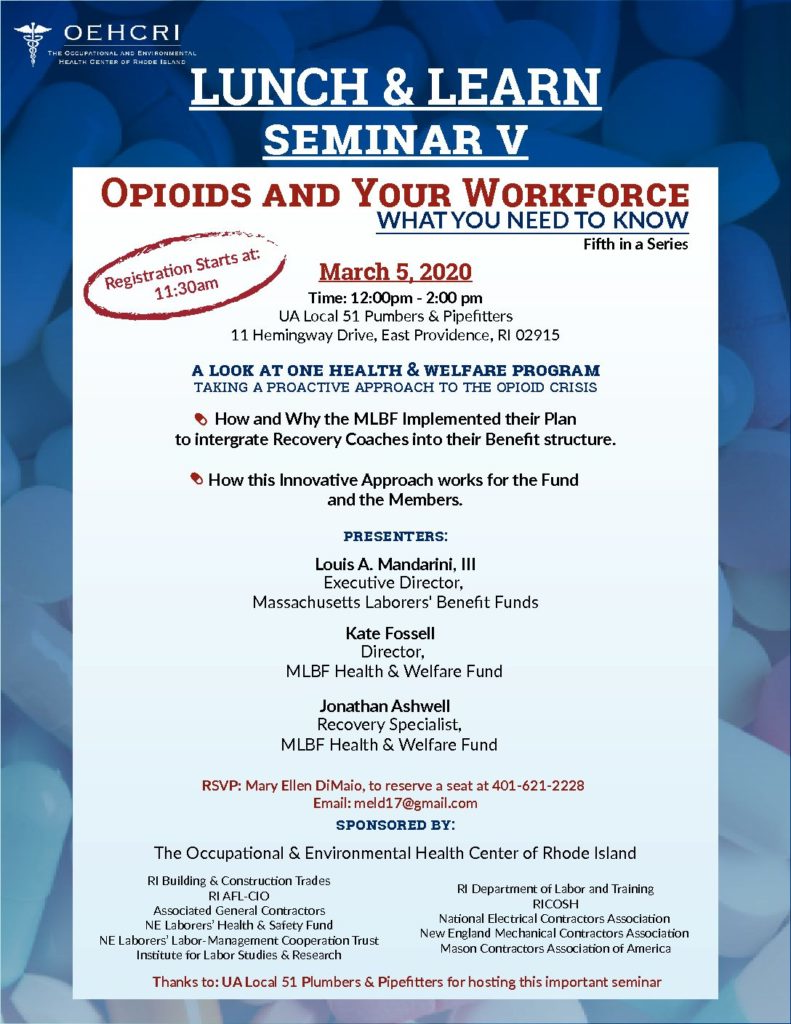The March SAFER meeting is March 4, 2020 from 8-10AM at the New England Institute of Technology, 2480 Post Road, Warwick, RI in the Hall of Fame room. See below for the meeting outline. Also, please take a few minutes to complete the surveys. Sponsor is Digregorio Corporation.
MARCH 2020 – SAFER Agenda:
Introductions.
Topic: RISP FMCSA Drug and Alcohol Clearinghouse and Cell Phone Use.
Presenter: RISP Trooper Sean Pasley
Topic: Coronavirus (COVID-19).
Presenter: Ed Conway, OSHA CAS.
Topic: Anchor Insulation Lesson Learned.
Presenter: Chris King, Director of Safety, Anchor Insulation.
Sponsor: Coffee and Calories provided by DiGregorio Construction.
Surveys:
RI Dept. of Health Construction Industry Respirator Usage and COVID-19 Impact of Supply Chain – 3-Question Survey RIDOH Request for Information-Respirators .
CCRI Workplace Technology in Construction – 3-Question Survey CCRI Solicitation-Take the Survey to Support the FREE Program
OSHA Providence Area Office Half-Day Summer 2020 Safety Intern Event – 3-Question Survey OSHA Invitation-2020 Summer Intern Event
What: OSHA PAO half-day (or so) summer intern event.
Who: Interns working at RI construction companies during the summer of 2020, and Keene State OSH students interning in RI.
Where: OSHA Providence Area Office; 380 Westminster St., Room 543; Providence, RI. Note: All visitors will be screened by security in the building lobby.
When: Date TBD
Draft Agenda: Briefing on the what, where, why, how of OSHA’s mission Current enforcement focus areas. Discussion of a casefile from start to finish. Importance of employer documentation. Elements of a citation. Employer abatement of hazards. Industrial hygiene monitoring. Emerging hazards/5(a)(1)s. Open Q & A.
Each topic will be addressed from a 10,000 foot view (or so, maybe even higher) in quick 30 minute or less sessions using, whenever possible, participatory and hands on instructional methods.






